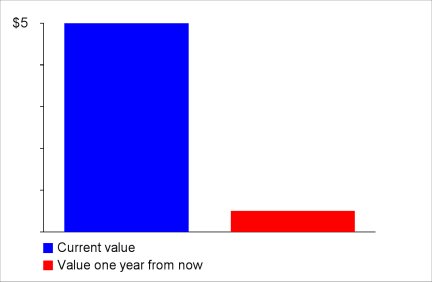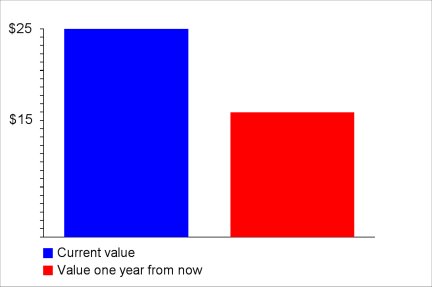Bookselling in the 21st Century
Part XIV: Visualizing What You Need to Do to Make Bookselling Work: $5 Booksby Craig Stark #143 12 April 2010
|
Responses to last week's installment of Bookselling in the 21st Century were both interesting and numerous, and one pattern in particular caught my attention.
Several of you noted that, while overall competition in your scouting areas hadn't fallen off yet, much of your competition (some of it comprised of booksellers
who had been at this game for years) didn't understand what needed to be done to make bookselling work going forward. In other words, much of the observed
competition consisted either of inexperienced sellers who hadn't caught on yet or experienced sellers who were doing exactly the same thing they had been doing
last year or several years ago or longer - that is, essentially the same thing that inexperienced sellers were doing - and often lamenting that things just
weren't working as well as they once had.
When I write about bookselling - more specifically, when I write about how to make bookselling work, I sometimes wonder how effective I am at communicating things. This hits home with a resounding thud when I get emails from booksellers who say they've been reading my junk for years and ask for advice on how to improve their sales - and then I subsequently discover that their ASPs are $5 or $10!
Your ASP (average selling price) speaks volumes about where you are and especially about where you are headed.
Today and in several subsequent articles in this series I'm going to revisit the fundamentals and, instead of going over the same ground with words exclusively, attempt to show you visually what you need to do to make bookselling work - and why. And why there's some urgency now.
Let's start with ASPs. If you tell me that your ASP is $5, this in turn tells me that, if you aren't actively, vigorously working to raise this number,
your business will head south quickly if it hasn't already and likely no longer be viable within six months to a year, perhaps two years at best. Why? First,
look at this graph:
$5 books are by necessity common books, and if a book is selling for $5 today, you can be almost certain that within a year, as more and more copies come
onto the market - and oh, yes, they will - its value will drop to well under $1, perhaps even lose its value altogether. Don't ever lose sight of this:
In general, low-dollar books are by far the most likely books to quickly lose most or all of their value.
Okay, let's look at an example of how this might play out. Suppose you purchase 1,000 books today for $.50 each - a $500 investment. Suppose also that
these books have a current market value of $5 each. Reasonable, yes? $500 for a $5,000 inventory? But is it a $5,000 inventory?
Let's say that, in the first three months - and I'm being generous here, especially if you're an inexperienced seller - you sell 100 of these books at $5 each, the second three months another 100 at $4 each (a necessary price reduction to stay competitive as values fall), the third three months another 100 at $3 each, and the final three months another 100 at $2 each. Your earnings for the year are $500 + $400 + $300 + $200 = $1400. Minus your cost of acquisition, you're left with $1,400 - $500 = $900 (and let's leave costs of doing business out of it for now). The remaining 500 books are now essentially worthless, so your initial investment of $500 actually purchased only 500 books at an average cost of $1.00 each - double what you thought you were purchasing them for - and you have no remaining inventory from this purchase to carry forward into the next year. In other words, as far as this group of books is concerned, you're done - except for that trip to your local Goodwill to unload them.
Now, let's take that $900 and subtract the additional costs of doing business. Or start to. I want to keep this as simple as possible because it's the broader point I'm interested in, but it wouldn't be far-fetched to assume that, on average, at least $1 was spent for each of those 1,000 books in your inventory on listing fees and sales commissions alone - in other words, we can take $1,000 right off the top. Only there isn't enough top to take it off of because you're already $100 in the hole and you haven't even begun to factor in the many other expenses!
And don't forget that, had you not lowered prices during the course of the year, your outcome would've been significantly worse.
Do these numbers change for full-time booksellers who maintain much larger inventories and have more experience selecting inventory and marketing it?
Fulfilling sales? Sure they do, but even if you manage to push your business into the black and make a tolerable income, as long as your ASP remains in
$5 territory, all or most of your time will be consumed doing nothing but scouting, listing books, and fulfilling sales. Which brings me to the second
point you should never lose sight of: Time is your most precious resource, and if you use all of it to buy and sell books, I wouldn't bet on your business
surviving. (More about this in forthcoming articles.)
Depressed? Good! Now look at this graph:
Ah, the $25 book. Feel better? Not nearly as vulnerable to downward price pressure, so is this where you need to be? Next week I'll do a similar analysis on this class of books.
Copyright 2003-2011 by BookThink LLC

